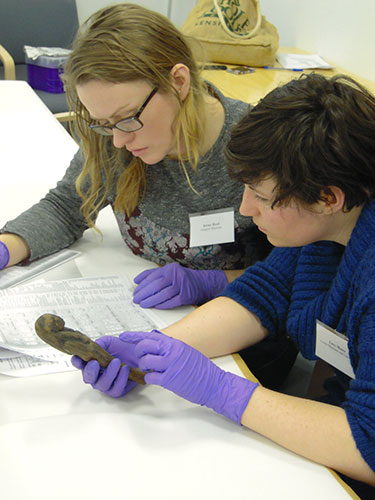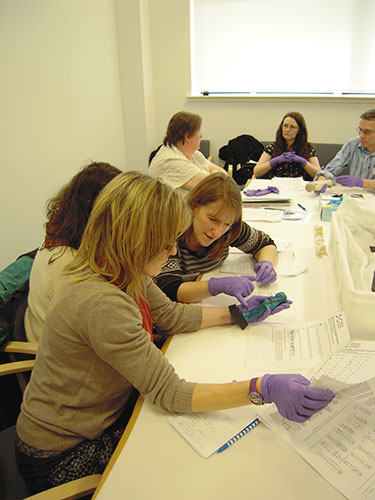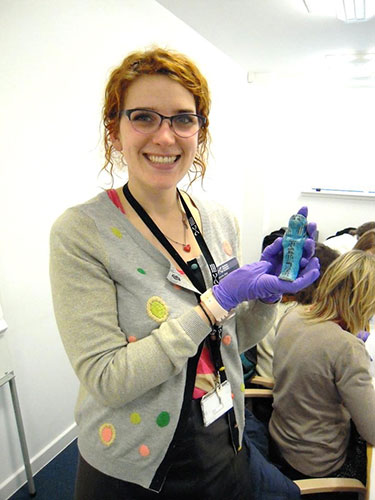Working at National Museums Scotland, no one day is the same. As part of my job as National Partnerships Officer I co-ordinate our Knowledge Exchange Programme. Through these training courses I get the opportunity to meet and work with some great people from museums all over Scotland, while at the same time learning lots about areas of museum practice – both things that I love!
Earlier this year, I worked with Margaret Maitland, Curator of the Ancient Mediterranean at National Museums Scotland, to put together and deliver a course to introduce our Egyptology collections and share knowledge on the care and identifications of Shabtis. As a child I loved reading about Ancient Egypt and its customs so I was particularly excited about the opportunity to arrange and attend the course and learn lots from Margaret.
“What are shabtis?!” I hear you ask! I thought the exact same thing when Margaret suggested them as a topic for the day. It turns out that they are small funerary figures used in Ancient Egypt, and they made for a fascinating knowledge exchange workshop. They are charming and stylistically complex objects which feature in a number of Scottish museums’ collections. Some information and images of shabtis in National Museum Scotland’s collections can be found here.

The event kicked off down at the National Museums Collections Centre – our storage facility in Granton – with Margaret giving the group a tour of the Egyptology collections that are in store. This was a great opportunity for me to get behind the scenes and see some fab objects that I normally wouldn’t have access to. We were treated to seeing some beautiful carvings and sarcophagi, as well as a lot of funerary material and – of course – some shabtis!
Margaret led us through the evolution of shabtis, their purpose, and stylistic and conceptual development. Then came the fun part – getting our hands on some actual shabtis! Prior to the group arriving, we had got some beautiful examples of shabtis out of their store and brought them down to the room. The group were kitted out with gloves and we dressed the table to make it suitable for handling. We split up into small groups and had a go at applying the skills we had developed in the morning to see if we could identify the figurines and read some inscriptions.


We had a lot of fun trying to identify characteristics and inscriptions on the great range of shabtis that Margaret selected. Even a novice like me was able to identify the odd hieroglyphic! Attendees to the workshop brought along with them photos of shabtis from their own collections and Margaret and the group had a go at identifying them too.
The day was a great success – the group found lots of common ground in their Egyptology collections and we discussed the possibility of a project together in the future. Margaret and I are now putting together a workshop for later in the year to further develop the group’s skills in reading hieroglyphics. For me, a particular highlight was getting to handle the shabtis and have a go at the identification. I am already looking forward to attending the next course and seeing if my childhood attempts at hieroglyph reading were any good – though something tells me I won’t be giving up my day job just yet!

